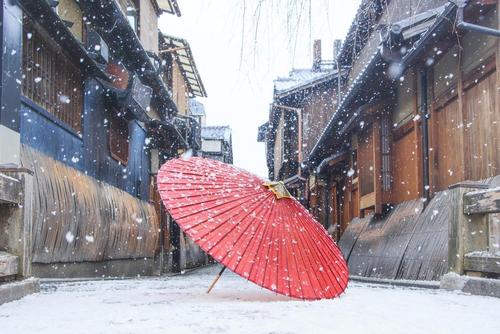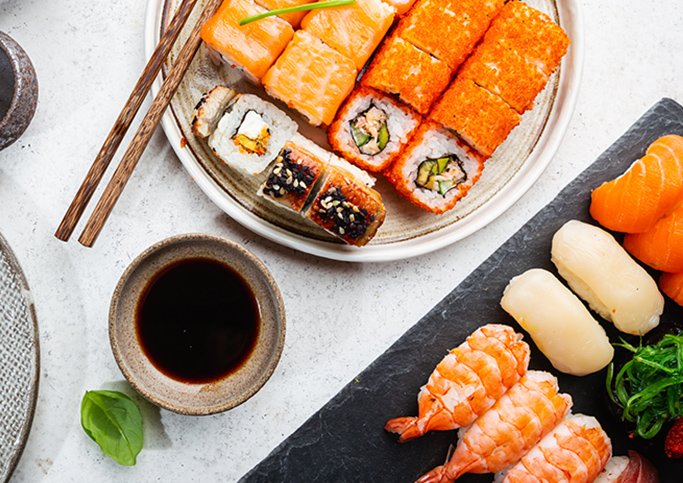In modern Japan, the number of opportunities to wear kimono may be very limited, such as coming-of-age ceremonies, receptions, and fireworks displays.
Also, there may be some people who feel nervous when wearing a kimono and mysteriously stretch their spine.
Kimono rental shops for tourists from overseas seem to be a great success, and there is no doubt that kimonos look attractive to foreigners as well.
Why don't you learn about the culture and history of kimono so that you can answer questions from overseas smoothly?
Introducing the culture of kimono and its history and charm.
What is kimono culture?

First of all, let's take a look at the basics of Japanese kimono culture.
Kimono culture and the country of Japan
Kimono is a Japanese folk costume. In the abundant nature surrounded by the sea and mountains and the changes of the four seasons, our ancestors living in Japan have developed their own aesthetic sense and expressed that aesthetic sense in kimono.
Some kimonos have materials and patterns that can be worn for a very limited time in accordance with the delicate changes of the four seasons in Japan.
It can be said that it is a luxury unique to kimono.
Crystal of craftsmanship that Japan is proud of
Japanese craftsmanship is utilized in kimono and obi.
Techniques have been handed down as traditional crafts in various places such as Nishijin-ori, Kyoto Yuzen, Kaga Yuzen, Oshima Tsumugi, and Honbakihachi.
Kimono as a traditional culture
Kimono, which has been handed down while changing over a long history, is one of the traditional cultures that Japan can be proud of.
It is only in kimono that it brings out the inner strength, suppleness, and grace that only Japanese people can have.
Even though there are few opportunities to wear kimono in everyday life, kimono still comes into play in important situations.
Kimono is indispensable for coming-of-age ceremonies, ceremonies such as visiting the shrine, lessons such as tea ceremony, flower arrangement, and Japanese dance, and ancient Japanese martial arts such as kendo and archery.
If you go out to appreciate Kabuki and Noh in kimono, you will feel better and you will be noticed by the people around you.
Another great thing about kimono is that if you manage and care for it properly, you can pass it on from grandmother to mother and from mother to daughter for generations.
Kimono and Japanese
Have you noticed that some of the expressions you use casually and the lines of novels and dramas are derived from kimono?
"襟を正す(Eri o tadasu)," "袂を分かつ(tamoto o wakatsu)," "辻褄が合う(Tsuzitsuma ga au)," "折目正しい(orime tadashi),"
To that extent, kimono is deeply rooted in Japanese life.
About the type of kimono

Did you understand how our Japanese life is deeply linked to kimono?
The scene of wearing a kimono is decided according to the type. I will also introduce this rule.
礼装着(Reisougi)
? 喪服(Mofuku)
It is a mourning dress with five crests in plain black worn by relatives during the wake-up and farewell ceremony.
?黒留袖(Kurotomesode)
A picture pattern is drawn on the hem, which is the first dress for married women. Worn for relatives' weddings, ceremonies and ceremonies.
The pattern is a single picture that straddles the seams.
?本振袖(honfurisode)
It is the first dress for unmarried women and is also called large kimono. It features long sleeves and a luxurious pattern. The bridal gown at the reception is this kimono.
略礼装着(Ryakureisougi)
? 色留袖(Irotomesode)
A kimono with a hem pattern other than black, worn by married women or unmarried women who have graduated from furisode.
·訪問着(Homongi)
A formal dress that women can wear regardless of whether they are married or unmarried. There are many gorgeous things, and they are widely used mainly for formal seats.
?振袖(Furisode)
Wearing a courtesy of an unmarried woman who is familiar even at the coming-of-age ceremony. It can be divided into furisode, medium kimono, and small kimono according to the length of the sleeve.
[If you read the article, may you know the meaning of this KARUTA? ]
外出着(Gaishutsugi)
?付け下げ(Tsukesage)
The Houmongi, which is dyed after cutting the white fabric, is patterned as it is, and features a modest pattern.
It's perfect for scenes that don't need to be changed as much as visiting clothes.
?小紋(Komon)
Kimono with repeated patterns throughout.
Wear it as a little fashionable outfit for lessons, going out with friends, watching theater, etc.
? 付け下げ小紋(Tsukesagekomon)
It is a small pattern attachment.
街着(Machigi)?普段着(Fudangi)?浴衣(Yukata)
? 紬(Tsumugi)
In the past, it was positioned as everyday wear, but now it's okay to wear it in a scene where you don't feel like going out.
However, no matter how expensive it is, it is not acceptable to wear it in formal occasions.
?絣(Kasuri)
Like the pongee, it is originally a casual wear, but now it is also used as an outing wear.
?黄八丈(Kihachijo)
It is a kimono for everyday use dyed in stripes and lattices with the broth of plants that grow naturally on Hachijojima.
·wool
Along with cotton, it is a kimono material that you usually wear.
·cotton
Yukata made of cotton is very popular during summer events such as fireworks displays because of its price and ease of dressing.
The charm of kimono

There are many types of kimono, so it's quite difficult to remember. The bride and groom's mother at the wedding ceremony will have black tomesodes, and the bridal gown will have large kimono sleeves.
Now, let me tell you about the charm of kimono.
Kimono brings out the inner beauty
Since there are restrictions on movement when wearing a kimono, you are required to behave differently than usual. The wording is also regulated because it makes you want to match the kimono and behavior.
When you wear a kimono, you need to pay attention to your behavior and wording, and you can meet yourself as a Japanese woman who is different from usual.
One side of traditional crafts
One of the major features of kimono is that it has an artistic design.
High-quality items such as Kaga Yuzen, Nishijin-ori, and Oshima Tsumugi can be passed down from parent to child for generations if they are carefully managed.
[Do you care about Japan? Would you like to learn Japanese together? ]
The charm of seasonal kimono
The charm of kimono is that you can enjoy the feeling of the season depending on the material and pattern.
In this case, it is said that kimonos should be worn half a month to a month in advance, and in February, you can enjoy the pattern of plum blossoms that bloom in March.
In addition, the real pleasure of kimono is that you can get a sense of the season not only with kimono and obi, but also with small items such as sandals, bags, and half-collars.
Summary
Kimono is a culture unique to Japan that is strongly linked to the land, traditions, craftsmen, and languages, and it is good to remember the basic types and scenes that are suitable for wearing.
The more information you have about a kimono, the more you see the person wearing the kimono.
Kimono that brings out the inner beauty of the wearer and allows you to enjoy the feeling of the season is also a traditional craft and is very popular with foreign tourists.
If you can understand and talk about the charm and culture of kimono, your charm will increase.
This article is a partial re-edit of the article published in Nihongo Biyori by KARUTA.
Unauthorized reproduction or use of the contents, text, images, illustrations, etc. of this site is strictly prohibited.
Mini Lesson Corner
Let's learn about Japan and Japanese!
"The meaning of the kimono pattern that can be understood in 90 seconds"
CATEGORIES
FEATURED TAGS
RECOMMENDATION
-
 報BUSINESS TERMS
報BUSINESS TERMSWhat is ”Ho-Ren-So”, one of the basic manners when working in Japan?
10/30/2020
-
 伝WORDS & GRAMMAR
伝WORDS & GRAMMARWhat is easy Japanese?
10/30/2020
-
 礼MANNERS
礼MANNERSJapanese greeting customs and origins. What are the greetings from other countries?
10/30/2020
-
 戯COMIC & GAME
戯COMIC & GAMEThe roots of animation and manga? Introducing bird and beast caricatures
10/30/2020
-
 戦SPORTS
戦SPORTSThe history of sumo goes back to the mythical world! ?? Transition from myth to modern times
10/30/2020
LET’S PLAY
KARUTA!
Do you know the meaning of this...
NEXT...
FURTHER EXPLORATION
INTERESTED
IN JAPAN?
WHY DON’T YOU
LEARN JAPANESE WITH US?
START LEARNING
JAPANESE
WITH HUMAN ACADEMY!
ONE OF
THE MOST POPULAR
JAPANESE
LANGUAGE SCHOOLS
JAPANESE
LANGUAGE SCHOOL
OFFERING EXCELLENT
DETAILED LESSONS

ONLINE SCHOOL
- Learn with your classmates from all over the world
- Variety of Courses for All Needs
- FREE Trial Lesson available

TOKYO, OSAKA
- Offer the Best Curriculum for You
- Make New Japanese Learning Friends
- Many Opportunities to Practice Japanese
MAKE FURTHER
STEPS
WITH HUMAN ACADEMY!
ONE OF
THE MOST POPULAR
JAPANESE
LANGUAGE SCHOOLS
JAPANESE
LANGUAGE SCHOOL
PRODUCING MANY
JLPT N1 CERTIFIED
STUDENTS!

ONLINE SCHOOL
- Learn with your classmates from all over the world
- Variety of Courses for All Needs
- FREE Trial Lesson available

TOKYO, OSAKA
- Support Your Higher Goal of Japanese Learning
- Perfect Environment for Japanese Learners
- Learn with Your New Japanese Study Mates

























